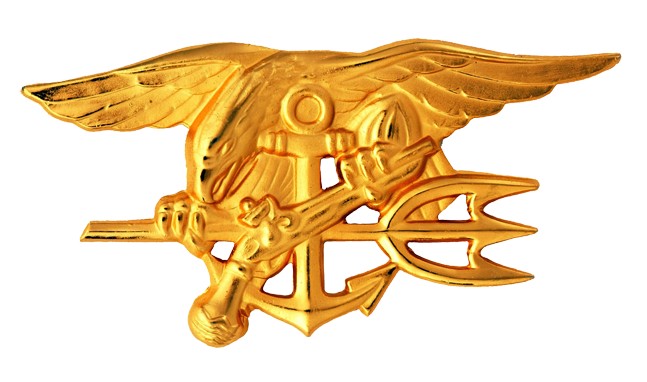 |
History |
|
Navy Seal start: The Navy Seals can be traced back to WW2 when the Navy had there original Navel Combat Demolition Units, Office of Strategic Services Operational Swimmers, Underwater Demolition Teams and Motor Torpedo Boat Squadrons although none of this early originations are still around today they did give birth to the Navy's NSW (Navy Special Warfare) units. To meet the need for beach recon joint Army and Navy selected personnel assembled at Amphibious Training Base, Little Creek, on 15 August 1942 to begin Amphibious Scouts and Raiders training. There mission was identify and reconnoiter the objective beach , maintain a position on the designated beach prior to a landing and guide the assault waves to the landing beach. The first of these groups included Phil H. Bucklew, the "Father of Naval Special Warfare," Commissioned in October 1942, this group saw combat in November 1942 during OPERATION TORCH, the first allied landings in Europe, on the North African coast. A second group of Scouts and Raiders, code-named Special Service Unit #1, was established on July 7, 1943, as a joint and combined operations force. The first mission, in September 1943, was at Finschafen on New Guinea. Later ops were at Gasmata, Arawe, Cape Gloucester, and the East and South coast of New Britain, all without any loss of personnel. Conflicts arose over operational matters, and all non-Navy personnel were reassigned. The unit, renamed 7th Amphibious Scouts, received a new mission, to go ashore with the assault boats, buoy channels, erect markers for the incoming craft, handle casualties, take offshore soundings, blow up beach obstacles and maintain voice communications linking the troops ashore, with incoming boats and nearby ships. The 7th Amphibious Scouts conducted operations in the Pacific for the duration of the conflict, participating in more than 40 landings. In September of 1942, 17 Navy salvage personnel arrived at ATB Little Creek, VA for a one-week concentrated course on demolitions, explosive cable cutting and commando raiding techniques. On 10 November 1942, this first combat demolition unit succeeded in cutting a cable and net barrier across the Wadi Sebou River during Operation TORCH in North Africa. Their actions enabled the USS DALLAS (DD 199) to traverse the river and insert U.S. Rangers who captured the Port Lyautey airdrome. Plans for a massive cross-channel invasion of Europe had begun and intelligence indicated that the Germans were placing extensive underwater obstacles on the beaches at Normandy. On 7 May 1943, LCDR Draper L. Kauffman, "The Father of Naval Combat Demolition," was directed to set up a school and train people to eliminate obstacles on an enemy-held beach prior to an invasion. On 6 June 1943, LCDR Kaufmann established Naval Combat Demolition Unit training at Ft. Pierce. By April 1944, a total of 34 NCDUs were deployed to England in preparation for Operation OVERLORD, the amphibious landing at Normandy. Through out the rest of the war they helped in many different operations along with the UDTs in the Pacific. Responding to President Kennedy's desire for the Services to develop an Unconventional Warfare (UW) capability, the U.S. Navy established SEAL Teams ONE and TWO in January of 1962. Formed entirely with personnel from Underwater Demolition Teams, the SEALs mission was to conduct counter guerilla warfare and clandestine operations in maritime and riverine environments. SEAL involvement in Vietnam began immediately and was advisory in nature. SEAL advisors instructed the Vietnamese in clandestine maritime operations. SEALs also began a UDT style training course for the Biet Hai Commandos, the Junk Force Commando platoons, in Danang. In February 1966, a small SEAL Team ONE detachment arrived in Vietnam to conduct direct-action missions. Operating out of Nha Be, in the Rung Sat Special Zone, this detachment signaled the beginning of a SEAL presence that would eventually include 8 SEAL platoons in country on a continuing basis. Additionally, SEALs served as advisors for Provincial Reconnaissance Units and the Lien Doc Nguoi Nhia, or LDNN, the Vietnamese SEALs. The last SEAL platoon departed Vietnam on 7 December 1971. The last SEAL advisor left Vietnam in March 1973.
|
||||